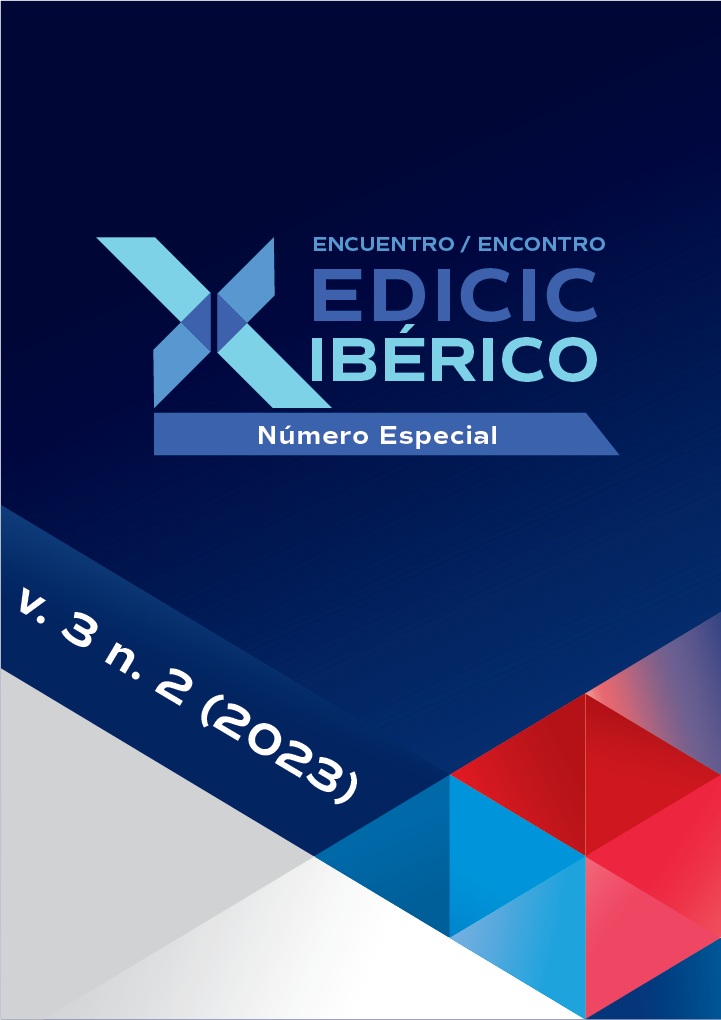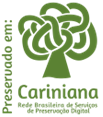Una propuesta de representación temporal en los sistemas de información: aplicación a la legislación de educación obligatoria en Portugal (Siglos XVIII-XX)
DOI:
https://doi.org/10.62758/re.v3i2.203Palabras clave:
Sistema de Información Temporal, Archivo, Mediación de la Información, Ciencias de la Información, Ciencia en RedResumen
Corresponde a CI investigar las propiedades y el comportamiento de la información, las fuerzas que gobiernan los flujos de información y su procesamiento, para su máxima utilización y uso, así como también corresponde a CI importar el uso social y humano de la información, de una manera multidisciplinario, diálogo interdisciplinario y transdisciplinario. El conocimiento puede entenderse como un fenómeno resultante de la acumulación de información dentro de la mente humana, que permite a quien la posee utilizarla en nuevas situaciones. El momento presente resulta de una serie de interacciones, del pasado y que se entrelazan como eslabones de una cadena continua. La posibilidad de construir un mapa o artefacto que permita actualizar la información del pasado en el presente podría incrementar el conocimiento individual y social. También se entiende que la mediación de la información es un proceso histórico-social, ya que el momento en que se produce no es un marco temporal estático. Esta relación también puede verse en el contexto de la mediación archivística. La disposición diacrónica de los documentos es algo que subyace a la serie documental. Los flujos de información que comenzaron en el pasado se manifiestan en el presente, de manera concreta, aunque no siempre reconocida, debido a la distorsión que imponen los límites de nuestras vidas. Existen técnicas recientes, basadas en la Ciencia en Red, que facilitan la visualización de relaciones evolutivas temporales y sistémicas, que permiten responder a la pregunta que surge: ¿dónde están hoy los acontecimientos del pasado? El archivo es testigo del pasado y el archivero puede ser, a través de la construcción de este tipo de artefacto, el 'actualizador' por excelencia de la información transmitida en el presente con el mínimo de apropiación e interferencia. Se diseñó una investigación que se basará en un corpus, a partir de la recopilación de la legislación portuguesa sobre educación obligatoria, desde el siglo XVIII al siglo XX, marcando los diferentes momentos en el tiempo y que, como tal, se incluirá en la construcción. del sistema. El objetivo es construir un sistema de información temporal, un mapa visual o artefacto, a partir de las series documentales que demuestre la evolución diacrónica de los acontecimientos que en ellas se describen. Este artefacto buscará fundamentar una forma de mediación por parte del archivero, la de un “actualizador” de información pasada. Para el abordaje del objeto se utilizó el método cuadripolar y en la parte empírica se utilizó el análisis automático de contenido latente, para el cálculo, diploma a diploma, de conglomerados de significado semántico cuantificado. A partir de la cuantificación, calculada mediante el software R-Iramuteq (Método Reinert), se construirá un sistema visual, plasmado en un 'gráfico de bandas' que reflejará los flujos de información temporal. El método se probó a partir de tres diplomas (documentos) jurídicos ordenados diacrónicamente, obteniendo un mapa o sistema de información temporal traducido en un gráfico visual que permitió visualizar la evolución de los acontecimientos en el tiempo y, por tanto, la factibilidad de una construcción sistemática de este tipo. de artefactos.
Citas
Almeida Junior, O. F. (2009). Mediação da informação e multiplas linguagens. Ciência da Informação, 2(1). https://brapci.inf.br/index.php/res/v/119300
Barreto, A. D. A. (2002). A condição da informação. São Paulo em Perspectiva, 16(3), 67–74. https://doi.org/10.1590/S0102-88392002000300010 DOI: https://doi.org/10.1590/S0102-88392002000300010
Barreto, A. D. A. (2007). Uma história da ciência da informação. Em Para Entender a Ciência da Informação (Vol. 1–1). UFBA.
Boccaletti, S., Bianconi, G., Criado, R., del Genio, C. I., Gómez-Gardeñes, J., Romance, M., Sendiña-Nadal, I., Wang, Z., & Zanin, M. (2014). The structure and dynamics of multilayer networks. Physics Reports, 544(1), 1–122. https://doi.org/10.1016/j.physrep.2014.07.001 DOI: https://doi.org/10.1016/j.physrep.2014.07.001
Borko, H. (1968). Ciência da Informação? O que é isto. American Documentation, 19(1), 3–5. DOI: https://doi.org/10.1002/asi.5090190103
Börner, K., & Scharnhorst, A. (2009). Visual conceptualizations and models of science. Journal of Informetrics, 3(3), 161–172. Scopus. https://doi.org/10.1016/j.joi.2009.03.008 DOI: https://doi.org/10.1016/j.joi.2009.03.008
Buckland, M. K. (1991). Information as thing. Journal of the American Society for Information Science, 42(5), 351–360. https://doi.org/10.1002/(SICI)1097-4571(199106)42:5<351::AID-ASI5>3.0.CO;2-3 DOI: https://doi.org/10.1002/(SICI)1097-4571(199106)42:5<351::AID-ASI5>3.0.CO;2-3
Börner, K., Chen, C., & Boyack, K. W. (2003). Visualizing knowledge domains. Annual Review of Information Science and Technology, 37, 179–255. Scopus. DOI: https://doi.org/10.1002/aris.1440370106
Capurro, R., & Hjorland, B. (2007). O conceito de informação. Perspectivas em Ciência da Informação, 12, 148–207. https://doi.org/10.1590/S1413-99362007000100012 DOI: https://doi.org/10.1590/S1413-99362007000100012
Chen, C. (2006). Information visualization: Beyond the horizon (p. 316). Springer International Publishing; Scopus. https://doi.org/10.1007/1-84628-579-8 DOI: https://doi.org/10.1007/1-84628-579-8
Chen, B., Tsutsui, S., Ding, Y., & Ma, F. (2017). Understanding the topic evolution in a scientific domain: An exploratory study for the field of information retrieval. Journal of Informetrics, 11(4), 1175–1189. Scopus. https://doi.org/10.1016/j.joi.2017.10.003 DOI: https://doi.org/10.1016/j.joi.2017.10.003
Cunha, M. lacerda. (2019). Hereditariedade Epigenética Transgeracional. [ Universidade de Lisboa.
Daud, A., Li, J., Zhou, L., & Muhammad, F. (2010). Knowledge discovery through directed probabilistic topic models: A survey. Frontiers of Computer Science in China, 4(2), 280–301. https://doi.org/10.1007/s11704-009-0062-y DOI: https://doi.org/10.1007/s11704-009-0062-y
Gauvin, L., Panisson, A., & Cattuto, C. (2014). Detecting the Community Structure and Activity Patterns of Temporal Networks: A Non-Negative Tensor Factorization Approach. Plos One, 9(1), e86028. https://doi.org/10.1371/journal.pone.0086028 DOI: https://doi.org/10.1371/journal.pone.0086028
Gouveia, L. B. (2022). Uso e Exploração do Método Quadripolar no Contexto da Ciência da Informação e da Infocomunicação [Pos-Doc]. Universidade do Porto.
Herman, I., Melancon, G., & Marshall, M. S. (2000). Graph visualization and navigation in information visualization: A survey. IEEE Transactions on Visualization and Computer Graphics, 6(1), 24–43. https://doi.org/10.1109/2945.841119 DOI: https://doi.org/10.1109/2945.841119
Hornsby, K., & Egenhofer, M. J. (2000). Identity-based change: A foundation for spatio-temporal knowledge representation. International Journal of Geographical Information Science, 14(3), 207–224. Scopus. https://doi.org/10.1080/136588100240813 DOI: https://doi.org/10.1080/136588100240813
Holme, P., & Saramäki, J. (2012). Temporal networks. Physics Reports, 519(3), 97–125. https://doi.org/10.1016/j.physrep.2012.03.001 DOI: https://doi.org/10.1016/j.physrep.2012.03.001
Jörgensen, P. (2005). Incorporating context in text analysis by interactive activation with competition artificial neural networks. Information Processing & Management, 41(5), 1081–1099. https://doi.org/10.1016/j.ipm.2004.10.003 DOI: https://doi.org/10.1016/j.ipm.2004.10.003
Latapy, M., Viard, T., & Magnien, C. (2018). Stream graphs and link streams for the modeling of interactions over time. Social Network Analysis and Mining, 8(1), 61. https://doi.org/10.1007/s13278-018-0537-7 DOI: https://doi.org/10.1007/s13278-018-0537-7
Mattsson, C. E. S., & Takes, F. W. (2021). Trajectories through temporal networks. Applied Network Science, 6(1), Artigo 1. https://doi.org/10.1007/s41109-021-00374-7 DOI: https://doi.org/10.1007/s41109-021-00374-7
Marques, M. B. (2017). Gestão da Informação em sistemas de informação complexos. Pesquisa Brasileira em Ciência da Informação, 12(2), 60–76. DOI: https://doi.org/10.22478/ufpb.1981-0695.2017v12n2.35505
Marques, M. B. (2021). O fenómeno e o processo de construção da memória organizacional na sociedade do conhecimento. Em Narrativas mediáticas e comunicação: Construção da memória como processo de identidade organizacional. Imprensa da Universidade de Coimbra.
Morin, E. (2000). Os sete saberes necessários à educação do futuro. 2a ed., São Paulo: Cortez, Brasília, DF: UNESCO, 2000. Construção psicopedagógica; Instituto Sedes Sapientiae. http://pepsic.bvsalud.org/scielo.php?script=sci_abstract&pid=S1415-69542020000100009&lng=pt&nrm=iso&tlng=pt
Newman, M. (2001). The structure of scientific collaboration networks. PNAS, 98(2). https://www.pnas.org/content/98/2/404 DOI: https://doi.org/10.1073/pnas.021544898
Newman, M. (2018). Networks (2nd edition). Oxford University Press. DOI: https://doi.org/10.1093/oso/9780198805090.001.0001
Rosvall, M., & Bergstrom, C. T. (2010). Mapping Change in Large Networks. PLOS ONE, 5(1), e8694. https://doi.org/10.1371/journal.pone.0008694 DOI: https://doi.org/10.1371/journal.pone.0008694
Shera, J., & Cleveland, D. (1977). History and foundations of information science. ANNU. REV. INFORM. SCI. TECHNOL, 12, 247–275.
Silic, A., Morin, A., Chauchat, J.-H., & Basic, B. D. (2012). Visualization of temporal text collections based on Correspondence Analysis. Expert Systems with Applications, 39(15), 12143–12157. https://doi.org/10.1016/j.eswa.2012.04.040 DOI: https://doi.org/10.1016/j.eswa.2012.04.040
Silva, A. M. da; Ribeiro, F. (2002) Das "ciências" documentais à ciência da informação: ensaio epistemológico para um novo modelo curricular. Porto: Edições Afrontamento,.
Silva, A. M. da. (2006). Informação e Comunicação: As duas faces de Jano. PRISMA.COM, 2, 3–32.
Simard, F. (2021a). Evaluating metrics in link streams. Social Network Analysis and Mining, 11(1), 51. https://doi.org/10.1007/s13278-021-00759-7 DOI: https://doi.org/10.1007/s13278-021-00759-7
through Temporal Zooming. In: A. Tjoa, A. Cammelli, and R.
Sugimoto, C. R., Li, D., Russell, T. G., Finlay, S. C., & Ding, Y. (2011). The shifting sands of disciplinary development: Analyzing North American Library and Information Science dissertations using latent Dirichlet al. location. Journal of the American Society for Information Science and Technology, 62(1), 185–204. DOI: https://doi.org/10.1002/asi.21435
Tang, J., Musolesi, M., Mascolo, C., & Latora, V. (2010a). Characterising temporal distance and reachability in mobile and online social networks. ACM SIGCOMM Computer Communication Review, 40(1), 118–124. https://doi.org/10.1145/1672308.1672329 DOI: https://doi.org/10.1145/1672308.1672329
Wu, J., Wu, Y., Deng, S., & Huang, H. (2016). Multi-way Clustering for Heterogeneous Information Networks with General Network Schema. Em 2016 Ieee International Conference on Computer and Information Technology (cit) (pp. 339–346). Ieee. https://doi.org/10.1109/CIT.2016.23. DOI: https://doi.org/10.1109/CIT.2016.23
Descargas
Publicado
Cómo citar
Número
Sección
Licencia
Derechos de autor 2023 Revista EDICIC

Esta obra está bajo una licencia internacional Creative Commons Atribución 4.0.
La Asociación posee los derechos de autor de los textos que publica y adopta la licencia Creative Commons, CC BY 4.0 DEED Atribución 4.0 Internacional (https://creativecommons.org/
Usted es libre de:
- Compartir: copiar y redistribuir el material en cualquier medio o formato para cualquier propósito, incluso comercialmente.
- Adaptar: remezclar, transformar y construir a partir del material para cualquier propósito, incluso comercialmente.






